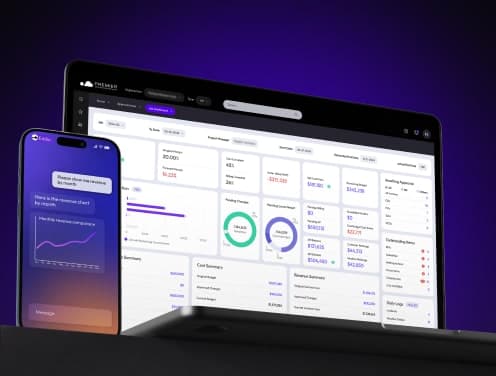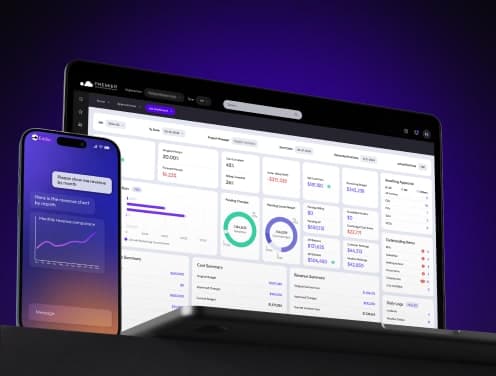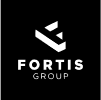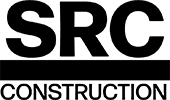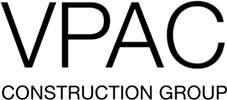
Exploring the Core Functions of Construction Management for Project Success
Construction projects fail at a rate of 85% to stay within their budgets, and 35% of them face major schedule delays. These numbers show why construction management is the life-blood of delivering successful projects.
Construction management functions cover a detailed framework of processes and methods that ensure project success. Quality control, resource optimization, risk management, and strategic planning work together to deliver projects on time and within budget. Premier Construction Software and industry experts know that a clear understanding of these core functions helps project managers guide complex projects while they retain control of quality, safety, and efficiency standards.
This detailed piece gets into the core functions of construction management and shows how each element drives project success. You will learn about strategic planning frameworks, quality assurance protocols, resource optimization techniques, risk management strategies, schedule control methods, and financial management systems that are the foundations of successful construction project delivery.
Strategic Project Planning Framework
A well-laid-out plan sets the groundwork for successful construction projects. It helps achieve project goals and keeps everything under control. Research shows that teams working together in early stages deliver cost performance 6.5% below budget.
Risk Assessment Methodologies
Construction risk assessment looks at both numbers and qualities to spot and reduce project challenges. Effective risk assessment has these key areas:
● Financial Risk Evaluation - Tackles cash flow problems and market changes
● Project Risk Analysis - Looks at resource handling and timeline issues
● Legal Risk Assessment - Focuses on permits and contract rules
● Safety Risk Management - Checks site dangers and worker safety
Stakeholder Alignment Strategies
Projects need everyone on the same page. Those that fail to communicate business goals clearly underperform by 3.3% on cost and 24.5% on schedule. Premier Construction Software believes successful alignment needs these vital steps:
1. Early Involvement - Bring stakeholders in during planning
2. Clear Communication - Set up open information channels
3. Goal Definition - Create shared targets and success measures
4. Regular Updates - Keep progress reports coming
5. Feedback Integration - Use stakeholder input throughout the project
Resource Allocation Models
Resource allocation models help distribute project assets in the best way possible. The Critical Path Method (CPM) and Critical Chain Method (CCM) are two main ways to handle construction resources. CPM looks at task order and timeline improvement. CCM adds resource limits and buffer management for realistic scheduling.
Strategic project buffers help absorb delays without losing momentum. These buffers sit between the final task and finish date. Feeding buffers make sure side tasks don't slow down the main work. This method helps construction managers keep projects moving while adapting to changes.
Good strategic planning leads to better coordination and growth opportunities in construction projects. Managers can guide complex projects with the right tools. This ensures everyone stays focused on project goals and uses resources wisely throughout the work.
Quality Assurance and Control

Quality assurance and control are vital functions of construction management that directly affect project success rates. Construction projects lose 6% to 15% of their costs due to poor quality work. These numbers show why strong quality management systems matter so much.
Quality Standards Implementation
Construction projects follow the ISO 9000 framework for quality standards. This system focuses on detailed documentation and ways to keep getting better. Quality management in construction covers:
● Design review protocols
● Material verification standards
● Workmanship requirements
● Documentation systems
● Performance metrics tracking
Premier Construction Software knows that good quality standards need both proactive quality assurance (QA) and reactive quality control (QC) measures. QA prevents defects through careful planning, while QC makes sure everything meets standards through testing and inspection.
Inspection Protocols
Quality management systems rely heavily on construction inspection protocols. Studies show that quality control inspections depend on specific project scope and determine when next phases can begin. Teams conduct regular site visits, document their findings, and fix any problems right away.
Framework follows step-by-step procedures to make sure construction work, materials, and craftsmanship meet set requirements. Quality assurance managers research building requirements during pre-design. Quality control officers then check project plans during design and planning.
Compliance Management
Companies blend quality assurance procedures with regulatory requirements for better compliance management. They create standard operating procedures that can adapt to different state rules, site conditions, and geology.
Project managers take direct responsibility for quality programs, with senior management watching over them. This top-down approach creates strong quality control through:
1. Operational procedures verification
2. Personnel qualification assessment
3. Equipment accuracy monitoring
4. Statistical evaluations
5. Technical procedure review
Senior authorized reviewers check all work products before final client submission in a two-step review process. This systematic approach helps maintain quality standards and ensures regulatory compliance throughout the project.
Resource Optimization Techniques
Resource optimization is the life-blood of construction management that affects project success rates. Construction firms can reduce unnecessary costs by preventing overstaffing and excess inventory when they implement good resource management frameworks.
Workforce Management
Construction projects need a methodical approach to labor allocation and productivity. Projects achieve higher workforce productivity through balanced workload distribution when resource management frameworks work well. Premier’s construction management software stresses the value of complete workforce planning strategies that include:
● Up-to-the-minute utilization monitoring
● Capacity vs. demand analysis
● Skill-based task allocation
● Individual development planning
● Performance tracking systems
Equipment Utilization
Equipment utilization directly streamlines processes and controls costs. Good equipment management can minimize downtime and boost productivity when machinery usage syncs efficiently. Strategic equipment management should have:
1. Up-to-the-minute monitoring systems
2. Preventive maintenance scheduling
3. Utilization rate tracking
4. Resource allocation optimization
5. Performance measures
Construction managers achieve optimal equipment utilization rates with advanced construction project management software tools that show machinery's performance and availability clearly.
Material Planning
Effective material planning is crucial to resource optimization in construction management. Construction projects often face changes in resource demands, especially during execution phases. A resilient material planning strategy needs Just-In-Time (JIT) delivery systems and smart inventory management protocols.
Material management works best when project resource plans follow Resource Breakdown Structure (RBS). This approach helps managers list all required resources and group them by function and type. Construction firms report major improvements in project delivery timelines and cost control when they use strategic material planning.
Up-to-the-minute tracking systems let project managers watch material utilization rates and make analytical insights. Organizations can spot and fix resource-related challenges early with robust resource management software, which leads to better project outcomes. This complete approach to resource optimization will give a project optimal efficiency while meeting quality standards and deadlines.
Risk Management and Mitigation

Construction risk management plays a vital role that can substantially affect project outcomes. Research shows construction projects have one of the highest rates of business failure among all economic sectors. This fact highlights why resilient risk management strategies matter so much.
Risk Identification Methods
Project managers need reliable techniques to spot potential challenges before they arise. Premier Construction Software stresses the value of multiple identification methods such as:
● Documentation review and historical data analysis
● Stakeholder consultation and expert interviews
● Site surveys and environmental assessments
● Risk categorization matrices
● Probability impact evaluations
Analytical insights help predict and reduce unwanted events while maximizing rewards through data-backed analysis.
Contingency Planning
Construction contracts need strategic resource allocation, time management, and financial planning to handle potential risks throughout the project lifecycle. Most construction projects allocate between 5-10% of the total budget for contingencies. A complete contingency planning approach has:
1. Risk Assessment and Evaluation
2. Resource Allocation Strategy
3. Timeline Buffer Integration
4. Stakeholder Communication Protocol
5. Implementation Monitoring System
Project teams that implement contingency plans show improved resilience. This builds stakeholder confidence by showing readiness for unexpected situations.
Impact Assessment Tools
Construction managers use impact assessment tools as systematic methods to evaluate what risks mean. Probability Impact Matrices help categorize risks based on their likelihood and potential effect on project goals. These matrices assist in:
● Prioritizing risks based on severity
● Allocating appropriate resources
● Developing targeted mitigation strategies
● Monitoring risk patterns throughout the project
Companies that use complete risk assessment tools report better project outcomes through improved prediction and management of challenges. Modern assessment technologies like Building Information Modeling (BIM) and data analytics have made risk evaluation and mitigation strategies more accurate.
Projects with well-laid-out risk management programs show higher success rates in staying within budgets and timelines. Construction managers can guide projects through uncertainties while maintaining efficiency by using systematic risk identification, strategic contingency planning, and sophisticated impact assessment tools.
Schedule Control and Time Management
Time management is the life-blood of construction project success. Research shows proper scheduling can reduce project delays by up to 20%. Premier Construction Software knows that good schedule control directly affects project outcomes and keeps stakeholders happy.
Critical Path Analysis
The Critical Path Method (CPM) is essential to construction scheduling. It identifies the sequence of tasks with zero float time that sets the project's minimum duration. Project managers use this approach to:
1. Define task dependencies and relationships
2. Calculate float time for each activity
3. Identify critical activities that affect completion
4. Optimize resource allocation
5. Monitor schedule performance
Research shows CPM helps contractors assign equipment, materials, and labor resources better. The method works best when projects face time pressure because managers can spot and fix potential bottlenecks quickly.
Milestone Tracking
Milestone tracking creates key checkpoints throughout the project. Studies show well-defined milestones help teams focus on major progress points and work better together. Strategic milestone implementation gives you:
● Better project visibility and progress monitoring
● Clearer stakeholder communication
● More accurate completion estimates
● Quick identification of possible delays
● Easier progress reporting
Construction managers use similar milestones in projects of all sizes to make planning and communication easier. These checkpoints mark the end of construction phases, aid transitions between stages, and show project handover points.
Delay Prevention Strategies
Projects with complete delay prevention strategies stick to their timelines better. Research shows an average construction project can expect delays of at least 20 months without proper preventive measures.
Effective delay prevention needs many approaches. You need reliable communication protocols and regular progress meetings. Premier Construction Software stresses the need for backup plans to handle weather delays or unexpected issues.
Construction managers should build strong relationships with suppliers to minimize supply chain problems. Projects using advanced tech for up-to-the-minute data analysis and digital documentation have fewer delays and better teamwork. These strategies include:
● Regular schedule reviews and adjustments
● Frequent progress meetings and updates
● Quick conflict resolution
● Early risk identification
● Resource availability checks
Industry data shows projects with well-laid-out time management systems stay on budget and schedule more often. Construction managers can control project schedules better by combining critical path analysis, strategic milestone tracking, and complete delay prevention strategies. This approach helps maintain efficiency throughout the project.
Cost Control and Financial Management
Research shows that 75% of projects go way over their original budgets. Premier Construction Software believes good financial management is the life-blood of project success. This happens through careful budget control and cost optimization.
Budget Development
Building an accurate construction budget needs a detailed grasp of project scope and money requirements. Projects that use Work Breakdown Structure (WBS) get more precise cost estimates and better tracking results. The budget process must cover these key parts:
● Direct Costs: Labor, materials, and equipment expenses
● Indirect Costs: Permits, insurance, and site security
● Contingency Funds: Typically ranging from 5% to 20% of total budget
● Profit Margins: Expected returns from project completion
Past project data helps create more accurate budget forecasts and guides planning efforts. Premier Construction Software suggests shared budget planning to create team responsibility for cost management.
Cost Tracking Systems
Today's construction projects need advanced cost tracking systems for financial control. Work-in-Progress (WIP) accounting helps spot differences between expected and actual costs. A good cost tracking system follows these steps:
1. Original baseline establishment
2. Real-time expense monitoring
3. Progress payment tracking
4. Change order management
5. Performance metric analysis
Projects that use advanced construction accounting software get better financial results. These systems give detailed oversight of construction costs and keep all stakeholders informed.
Value Engineering
Value engineering helps optimize project value without cutting quality. Early-stage value engineering can lead to big cost savings. The process looks at project components to find economical alternatives that work just as well.
Value engineering works best for:
● Structural systems optimization
● Material selection alternatives
● Equipment utilization strategies
● Construction methodology improvements
● Energy efficiency solutions
The schematic stage offers the best time for value engineering changes. This approach helps owners avoid paying too much when cheaper options can deliver the same quality.
Construction managers who use detailed financial management strategies get better project results. Real-time cost tracking and value engineering analysis help deliver projects within budget while keeping quality high.
Strategic cost management needs constant attention throughout the project. Projects with strong financial controls show better success at staying within budget. Construction managers can:
● Monitor expenses against established budgets
● Track key performance indicators
● Spot potential cost overruns early
● Fix problems quickly
● Keep stakeholders informed
Good financial management does more than track costs. It helps ensure project success and resource efficiency. Detailed budgeting, smart cost tracking systems, and strategic value engineering help construction managers control finances throughout the building process.
Conclusion
Construction management functions work together as a system that leads to project success through careful planning, execution, and control. Projects that use detailed management frameworks consistently perform better in key areas.
Quality control, resource optimization, and careful planning work together to build a strong foundation for delivering successful projects. Premier Construction Software and industry leaders know that good risk management and resilient schedule control reduce project delays and cost overruns by a lot.
Construction managers who become skilled at these core functions show:
● Boosted project results through careful planning and stakeholder agreement
● Lower quality-related costs through systematic inspection methods
● Better use of workforce, equipment, and materials
● Lower risks through detailed identification and prevention strategies
● Better timeline tracking through critical path analysis and milestone monitoring
● Stronger financial results through advanced cost control systems
These functions combine to create a structure that helps construction professionals deliver projects on time, within budget, and up to quality standards. Construction management keeps evolving with new technologies and methods while focusing on these basic principles that lead to project success.
